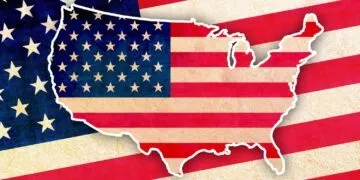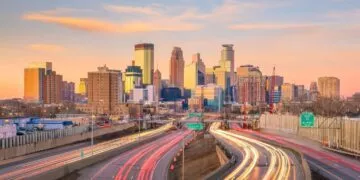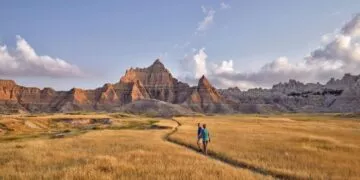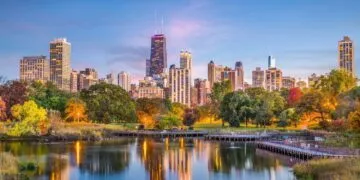Officially known as the “Peace Garden State” but also as the “Roughrider State,” the “Flickertail State,” and the “Sioux State,” North Dakota was the 39th state to join the United States of America on November 2, 1889.
It has a population of 762,062 (as of 2019), making it the 47th most populous state. North Dakota is bordered by the states of Montana, Minnesota, and South Dakota.
With a total of 70,704 square miles (183,123 square kilometers) of land and water, it is the 19th largest state.
The capital of North Dakota is Bismarck, which is pretty much smack-bang in the middle of the state.
That’s enough fast facts about the Peace Garden State. For now, we’re here to learn the more interesting facts!
People have lived in North Dakota for at least 10,000 years!
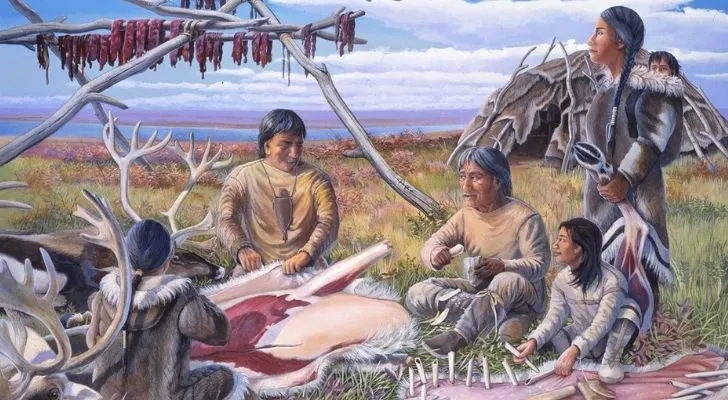
The first people to roam the Northern Plains were a group of people we now call the Paleo-Indians.
These early explorers came to the Americas between 12-15,000 BC via the Bering Strait, which at the time was a land bridge between the far east of Russia and Alaska.
They made their way to the region we now call North Dakota around 10,000 years ago, where they lived primarily as hunter-gathers for thousands of years.
It wasn’t until around 2000 BC that people began to live more settled lives in villages, although they did not give up their hunting culture.
A few different people were living in North Dakota before European settlement.
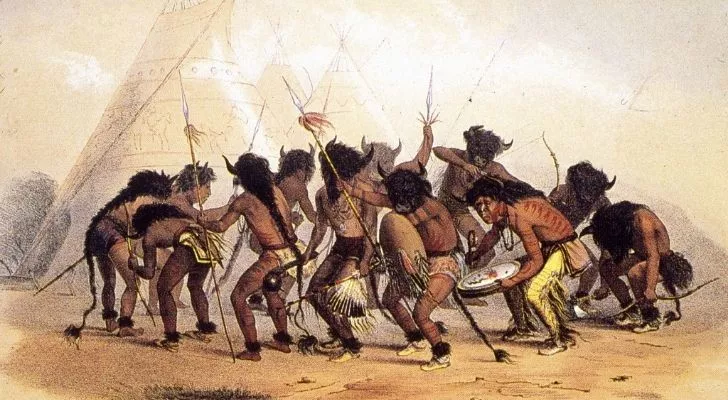
Before white people arrived in North Dakota, settlers had developed several distinct tribes and peoples.
For Dakota, their livelihood still depended on wandering herds of animals such as bison and their predominately nomadic lives.
Others, such as the Mandan, settled down entirely and lived year-round in villages along the banks of rivers such as Missouri in houses made of packed earth.
The villages of tribes such as the Mandan acted as commercial hubs for the other tribes living within the region before becoming more established trade hubs when the fur trade began.
The first European to set foot in North Dakota was a French Canadian.
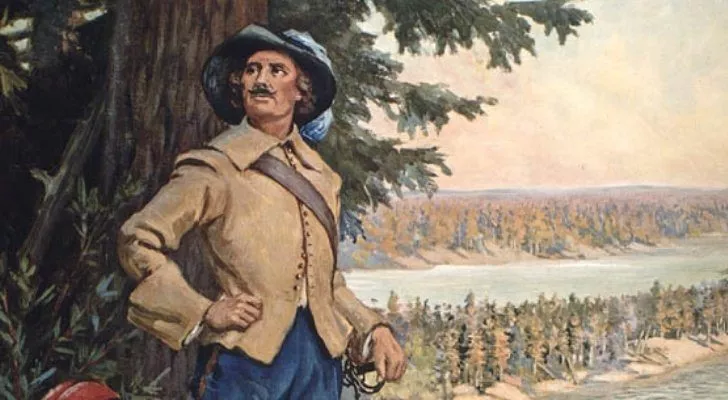
It wasn’t until 1738 that any European made it as far inland as modern-day North Dakota.
The first man who did was the French-Canadian explorer and fur trader Sieur de La Vérendrye when he reached a Mandan village on the banks of the Missouri River while searching for a passage west through to the Pacific Ocean.
When Vérendrye visited the village, it was supposed some 15,000 Mandan people were living in as many as nine well-fortified villages in the region.
North Dakota was almost empty of European Americans until the 19th century!
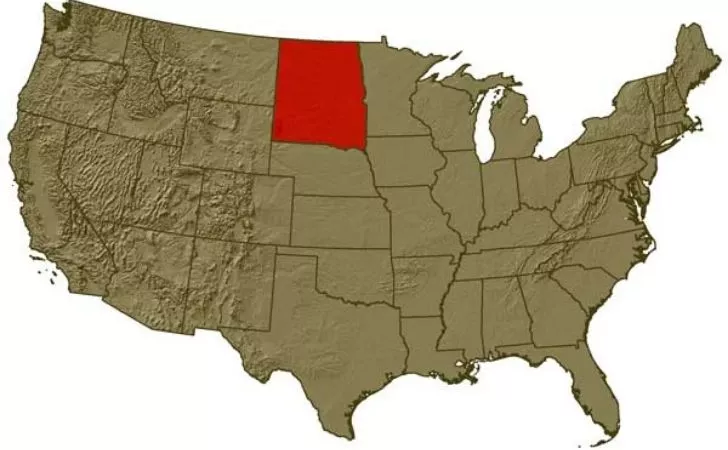
When you consider that the US was colonized mainly from east to west, it makes sense.
North Dakota is so far inland that European Americans didn’t settle in until railroads started to carve their way through the midwest.
As such, it wasn’t until 1861, when Dakota Territory was formed, that white settlement of the area began.
It wasn’t until 1872, when the Northern Pacific Railway line reached the Missouri River, that migrants started flocking in significant numbers to Dakota.
Shortly after, in 1889, the states of North and South Dakota were established due to the rapid rise in population.
European immigrants primarily settled in North Dakota.
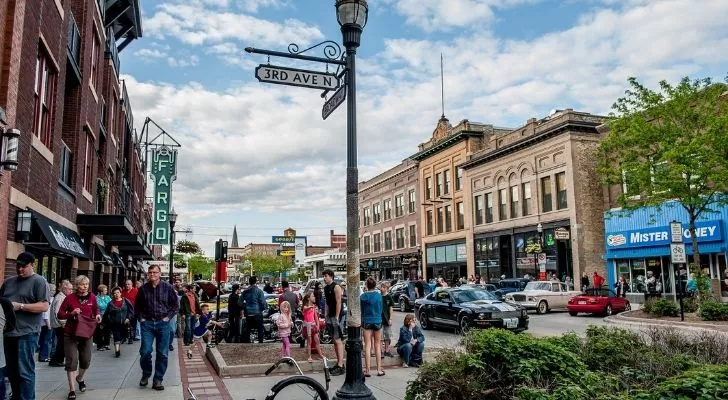
The first several hundred thousand migrants to start new lives in North Dakota were primarily American citizens.
Around 1900, the new state witnessed a second population boom which saw its population rapidly increase from 300,000 to 646,000 by 1920.
A vast majority of these new migrants came from Europe, though.
Most of the European migrants were either Norwegian or German, although there were still many who came from England, Ireland, and Scotland.
Over the next hundred years, North Dakota continued accepting people of all backgrounds.
As a direct result, by 1915, 79% of North Dakota’s population were either children of immigrants or immigrants themselves.
No one knows whether North Dakota is the 39th or 40th state.
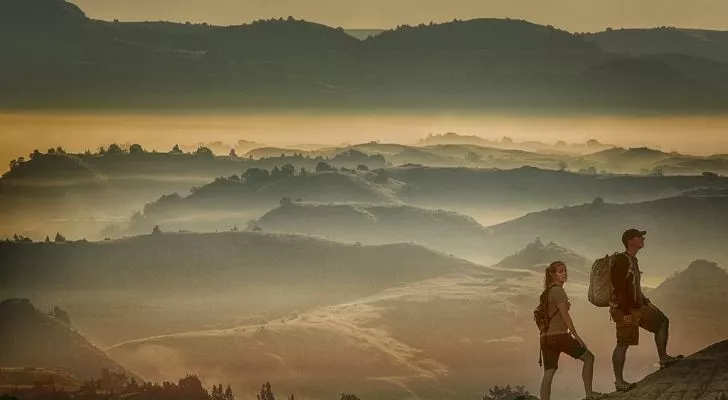
Before North Dakota became a state, it was a part of the Dakota Territory and South Dakota.
While Dakota Territory could have formed into one larger state, it was more beneficial for the ruling Republican Party to create two states out of the large territory as it would give them more seats in Congress.
As such, on November 2, 1889, President Benjamin Harrison signed the necessary papers to form the states of North and South Dakota.
To avoid favoritism towards either state, he shuffled the papers and signed them without looking at the names before reshuffling them.
Despite this, North Dakota is commonly referred to as the 39th state simply because it comes first in the list alphabetically.
A mummified dinosaur was found in North Dakota in 1999.
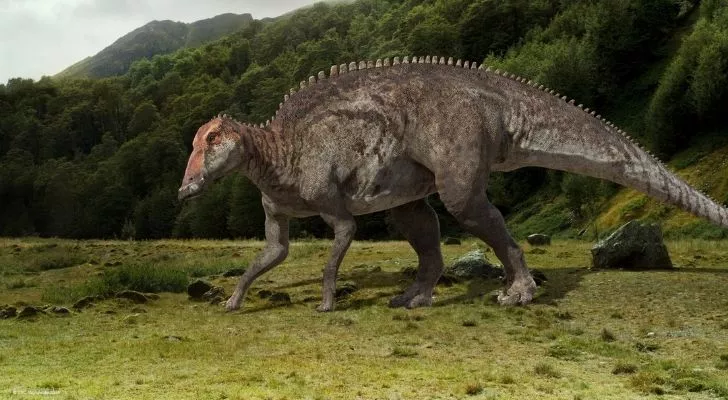
One of the late 20th century’s greatest dinosaur discoveries occurred near the small North Dakota town of Marmarth.
In 1999, high school student Tyler Lyson discovered a fossilized Edmontosaurus on his uncle’s ranch.
This discovery was significant because it was the first time a dinosaur fossil had been found, including its skin, muscle, and ligaments.
Usually, only the bones of dinosaurs are found by the time they are fossilized.
The find greatly inspired Lyson, as he went on to study Paleontology at Yale University.
About 90% of North Dakota is farmland.
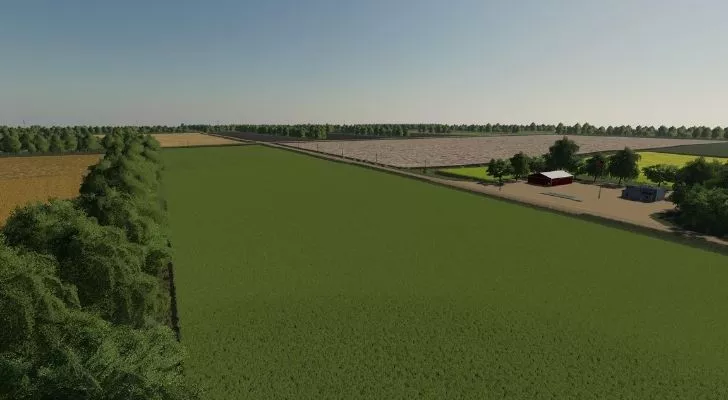
As you can imagine, farming is a big thing in the Peace Garden State.
Out of the state’s total 45.3 million acres (18.3 million hectares) of farmland, some 39.3 million acres (15.9 million hectares) are used for agricultural purposes, such as farming or ranching.
Some of the most common crops grown in North Dakota include canola, wheat, flaxseed, and beans.
Regarding livestock, cattle is the state’s favorite, with some 1.83 million cattle living in the state.
North Dakota forever changed Teddy Roosevelt’s life.
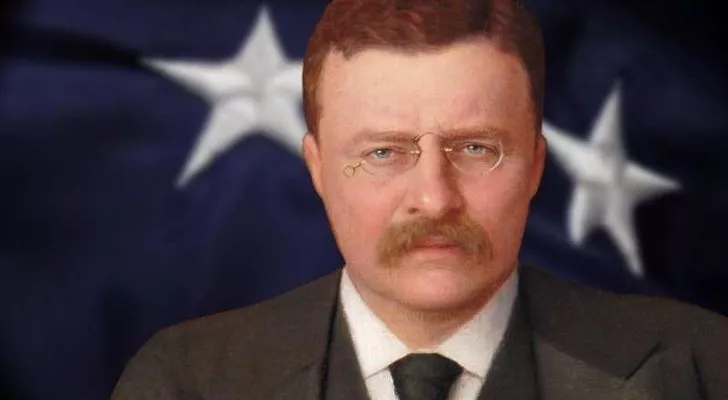
Theodore Roosevelt first came to North Dakota when he was 24 to improve his health and learn how to hunt.
At the time, he was little more than a skinny asthmatic New Yorker.
He instantly fell in love with the badlands of the state, where he wished to experience the wild west before it disappeared forever.
His wish came true in the end, as he bought several cattle ranches, participated in saloon fights, and mustered cattle.
His experiences helped change him into the influential figure that we all know today as President Theodore Roosevelt.
The geographical center of North America is in North Dakota.
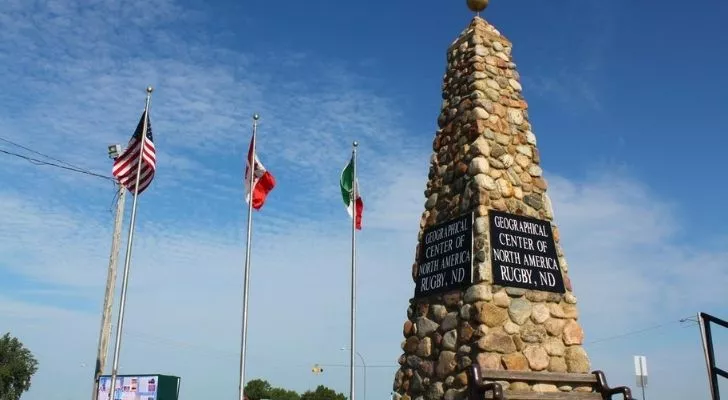
Back in 1928, a mathematician working for the US Geological Survey department determined that North America’s geographical center lay somewhere between the towns of Rugby and Balta, North Dakota.
Rugby quickly claimed the title as their own, erecting a monument in 1931. It turns out that their claim was incorrect all along.
In 2017, a more accurate calculation was made using a computer program designed by a Geography professor from the University of Buffalo.
The results of the calculation are rather astounding.
The program showed that the geographical center of North America is actually in a town called Center!
North Dakota holds the Guinness World Record for the most simultaneous snow angels.
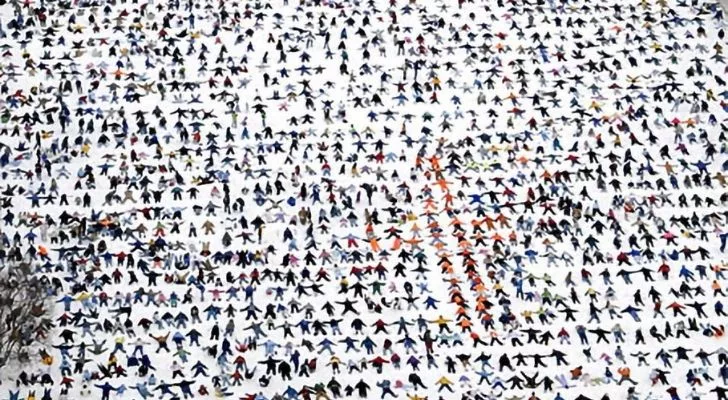
On February 17, 2007, 8,962 people flopped down on the ground and waved their arms and legs around in the snow to break the Guinness World Record.
The event occurred in the middle of the Capitol grounds in Bismarck, North Dakota, intending to take the record back from Michigan.
The Guinness World Record category only opened in 2002 when North Dakotans first set the record with 1,791 snow angels.
In 2006, Michigan stole its crown four years later by performing 3,784 simultaneous snow angels.
North Dakota’s more recent record is much harder to beat, as Michigan hasn’t tried since.
Fargo, the movie, wasn’t shot in North Dakota!
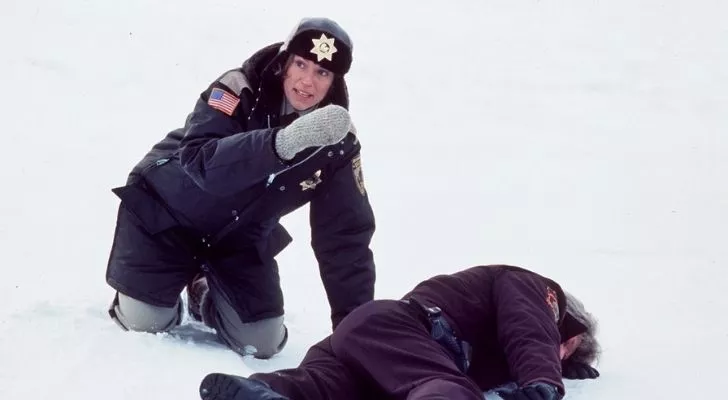
Both the Coen Brothers’ film Fargo and the FX TV adaptation weren’t filmed anywhere near the city of Fargo, North Dakota.
That makes sense when you think about it, as neither the TV series nor the movie is set in Fargo. They’re set in Minnesota!
The city is only seen in the film’s opening scenes and never features in the TV adaptation.
North Dakota used to be underwater.
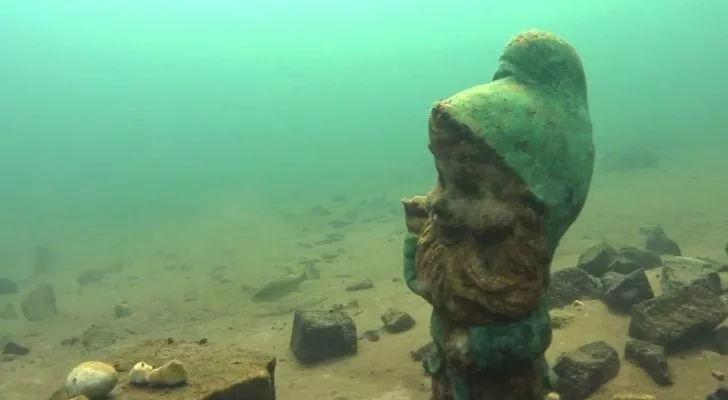
Between 90 to 65 million years ago, during the Cretaceous period, a large majority of North Dakota was underwater.
More specifically, it was submerged under a sea that made up a part of the Western Interior Seaway, which ran from the Gulf of Mexico up to the Arctic Ocean.
Remnants of this long-dead sea can be found in many places in the state where cliffs have been exposed.
Over the years, many fossils have been uncovered, including the fossils of the terrifying giant Cretaceous reptile, the mosasaur!
North Dakota hosts the country’s largest Scandinavian festival.
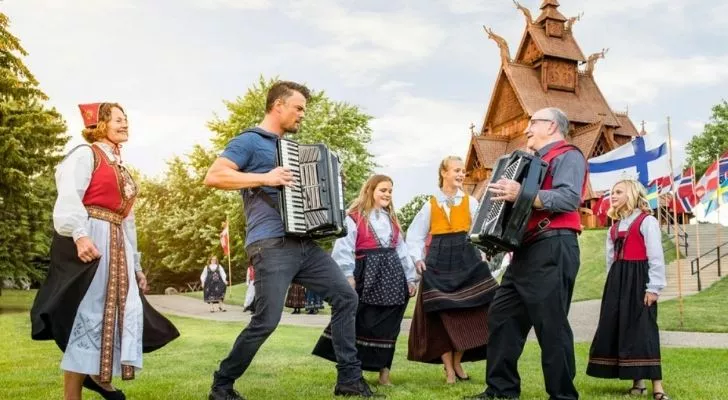
Every year since 1978, a festival celebrating all things Scandinavian has been held in Minot, North Dakota.
It is no surprise, as Scandinavians populated a large portion of the state in the early 20th century.
The festival was founded by friends who wanted to celebrate their heritage.
Nowadays, the festival is self-described as “Pure Scandimonium,” with world-class entertainment, traditional food, and an overwhelming variety of activities.
The largest Holstein Cow in the world is proudly displayed in North Dakota.
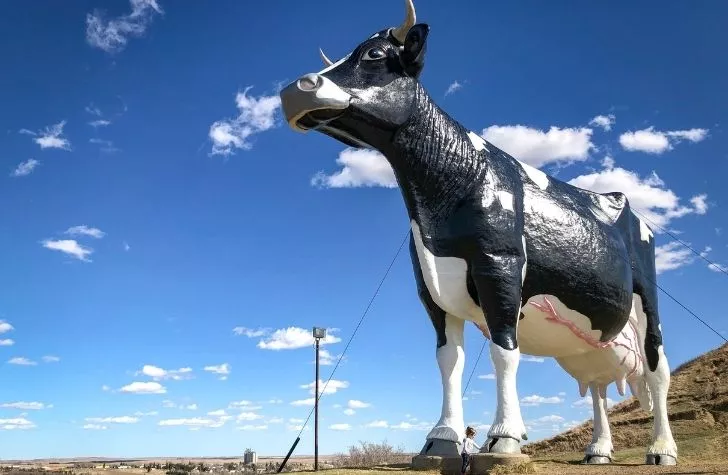
Salem Sue, or Sue to her friends, is quite large.
She lives in the town of New Salem, North Dakota, and is the pride and joy of the town.
She’s not just any statue, though – she’s the largest statue of a Holstein cow in the world, measuring some 38 feet (11.5 meters) high and 50 feet (15.2 meters) long.
She was constructed in 1974 to honor the state’s history of dairy farming and has been a popular roadside attraction ever since.
For a place that only became a state near the end of the 19th century, North Dakota sure is stuffed full of fascinating history!
Most people would pass the state off as yet another mid-western state, but that’s not true.
Sure, 90% of the state is agricultural land, but it’s a big state, and there’s so much to do and see in the other 10%.
Just make sure you don’t go there in the middle of winter, as it gets cold!


